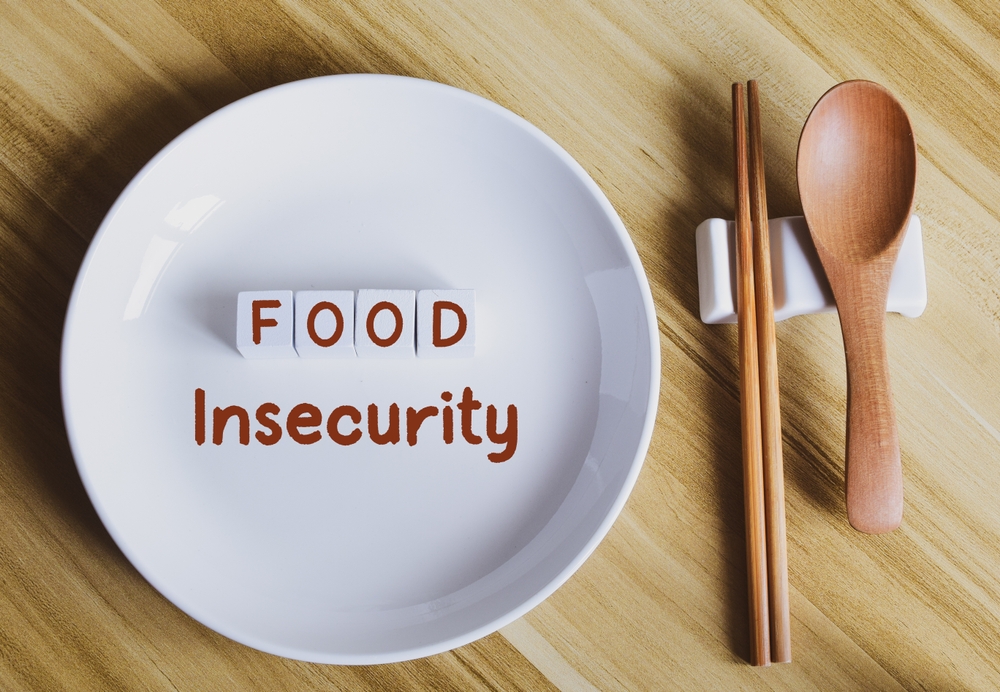Many college graduates remember living on instant noodles and chasing every student discount. But for today’s low-income undergraduates, the struggle runs much deeper. About 39 percent of U.S. college students come from low-income families, making it difficult to afford basic needs like food and housing.
Across the country, more than 20 million students are working toward a degree. Yet, many of them quietly struggle to keep food on the table. As tuition and rent climb higher each year, the issue of college student food insecurity has become much more serious.
This article explores the financial stress among college students and how they (especially online learners) cope, how campuses are responding, and which national networks help fill the gaps.
Related:
- How Does Accreditation Affect Financial Aid?
- Financial Aid Tips for Online College
- Best FAFSA for Certificate Programs: How Financial Aid Works for Short-Term Training
- Flexible Hybrid Learning: What Online Students Should Expect
- How Social & Political Climate Impacts International Students Online
- AI in Online College: How ChatGPT and Adaptive Tools Are Changing Learning
- Data Privacy Issues for Online College Students: What You Should Know
Understanding Financial Stress in College Students

College is full of expenses, some major than others. Here are the top student financial stress factors:
- Tuition and fees: As higher education costs rise, more students rely on loans or part-time work, stretching resources thin.
- Housing and utilities: Whether on campus or off, rent, electricity, water, internet, and maintenance costs weigh heavily.
- Textbooks and supplies: The cost of required books, software, lab fees, and tools often surprises incoming students.
- Childcare or dependents: Many nontraditional students must balance parenting or caregiving roles while studying.
- Medical bills and health care: Health emergencies, insurance costs, or prescriptions sometimes take priority over food.
- Transportation: Gas, public transit, and vehicle upkeep add yet another line item to tight budgets.
Online students face many of the same financial challenges as those on campus—sometimes even more. While they can study from home, they often juggle jobs and family duties without access to campus resources like food pantries or aid offices.
Many live far from campus or in different time zones, making support harder to reach. Because they frequently study part-time, they may also miss out on certain financial aid options and underestimate added costs such as higher household expenses.
Here are a few facts we found on the impact of financial challenges for college students:
- Financial stress affects more than just a student’s finances. It disrupts focus, motivation, and social engagement.
- Many students feel embarrassed or isolated when they can’t afford social activities with peers.
- Nearly 60% of college students have considered dropping out due to financial strain.
The Reality of Food Insecurity Among Students
It’s hard to picture hunger on campus. After all, universities are filled with dining halls, cafes, and vending machines. But the problem isn’t food availability, it’s affordability.
Here’s data about college student food insecurity:
- The NPSAS:20 by the National Center for Education Statistics (2023) found that about 23% of undergraduate students in the U.S. experienced food insecurity.
- At community colleges, that number was even higher, at 23.4%, compared to around 20% at four-year public institutions.
- Meanwhile, researchers at the APA discovered that more than half of their surveyed students — 53% — reported struggling with food insecurity within the last year. That’s more than four times the national average.
Food insecurity among college students exists on a spectrum. Some might skip meals occasionally to stretch their budget. Others face chronic lack of access, where every week is a question mark: Will there be dinner tonight? It’s not just a temporary hardship. For many, it’s a lifestyle shaped by poverty, rising costs, and insufficient support.
And the effects go beyond hunger pangs. Studies cited by APA show that students who are food insecure report higher rates of anxiety, depression, and academic distress.
The problem of college student food insecurity feeds itself. Hunger makes it harder to focus, which can lead to lower grades, which in turn adds more stress and uncertainty.
Campus Resources and Food Pantry Programs
Thankfully, campuses across the U.S. are responding. What used to be a taboo topic is now part of student wellness initiatives.
College food pantry programs have popped up everywhere, often started by students and faculty who saw classmates quietly struggling. These pantries range from full-scale operations with regular hours to informal “snack stations” stocked with granola bars and instant meals.
At Georgia Southern University, psychology faculty launched a snack station as part of their campus hunger resources. “No need to be hungry in class,” one professor told a student. The impact was immediate. The food basket emptied weekly, and students began referring friends and siblings who also needed help (APA, 2025).
Other schools have gone a step further with “swipe sharing” programs, where students with extra meal swipes can donate them to peers in need. Some colleges even offer hybrid food access, such as mobile pickup points or digital vouchers for students who study remotely.
National Support Networks & Nonprofit Programs
Beyond campus-level efforts, national student hunger programs aim to combat food insecurity:
- Swipe Out Hunger partners with over 900 colleges to end student hunger.
- In 2024–2025 alone, it served 807,000 students, provided 20.5 million meals.
- It has awarded over $1 million in grants to campus food programs.
- It pushes for policy change, including Virginia’s Hunger-Free Campus Bill.
- The Hope Center for Student Basic Needs at Temple University focuses on ending college student hunger and housing insecurity.
- The center conducts research and policy work and forges partnerships with other colleges.
- One of its main programs, Hope Impact Partnerships (HIP), helps schools use data to support student well-being and equity.
- SNAP is the federal Supplemental Nutrition Assistance Program that many students don’t realize they might qualify for.
- According to Freudenberg et al. (2019), college students represent “the new face of food insecurity” and remain underrepresented in SNAP participation despite being eligible.
- Today, several states have simplified the application process for getting SNAP benefits for college students. More colleges are training staff to help students apply online.
For online students who live far from campus, colleges are using digital tools and local delivery partnerships to keep them supported. Evidently, food assistance doesn’t have to stop at the campus gates.
Coping Strategies for Students Facing Financial Strain
Budget with intention.
One of the best student money management tips is to use free online tools like Mint or YNAB to help track spending and plan for recurring expenses. Some universities host financial literacy workshops that teach budgeting, credit management, and loan awareness.
Look into emergency grants or micro-loans.
Many colleges quietly offer small grants or short-term loans for students in crisis — say, when an unexpected medical bill or car repair threatens their semester. Asking student affairs or financial aid offices can uncover options that aren’t widely advertised.
Build peer support networks.
Mutual aid groups, student clubs, and informal online communities have become lifelines for many struggling students. Sharing groceries, pooling rides, or simply having someone who understands the struggle can ease the weight of financial stress.
Prioritize your well-being.
Financial insecurity can lead to shame and isolation, which makes it harder to seek help. But opening up to counselors, mentors, or trusted professors often reveals more resources than students realize exist.
It’s not about “just budgeting better.” It’s about acknowledging that coping with financial stress in college is a mental, emotional, and logistical challenge — one no one should face alone.
What Colleges Can Do to Support Struggling Students
Colleges are tackling food and financial insecurity through long-term, student-centered efforts, a growing trend in institutional responses to student hunger. Many campuses now offer:
- Financial wellness in advising: Some colleges include financial guidance as part of academic support to help students manage money and stay on track. The University of New Hampshire does this through its financial wellness hub. Students can budget, handle loans, and meet with advisors one-on-one.
- Hybrid pantry models: These programs make food and basic needs more accessible, both on campus and online. The Massachusetts College of Liberal Arts runs an Essential Needs Center that offers food, clothing, and emergency funds in one convenient space.
- Community partnerships: Colleges are teaming up with local groups to extend food access beyond campus. For example, Roxbury Community College partners with grocery stores and organizations to provide meals and gift cards, especially during school breaks.
- Policy advocacy: Many schools are pushing for long-term solutions through state and federal policy changes. Universities advocate for expanded SNAP eligibility and more funding for student emergency aid to ensure ongoing support.
These examples highlight real college support for food insecurity. They show how institutions can make food access and basic needs security a permanent part of student success.
Conclusion
Financial stress and food insecurity among college students aren’t rare or isolated problems. They’re part of the new reality of higher education. The good news? They’re not insurmountable.
From snack stations and food pantries to national programs and online tools, resources for college students in need are growing. But awareness is key. Students should never feel ashamed for seeking help, and institutions must continue scaling solutions that treat food access as a basic right, not a privilege.
